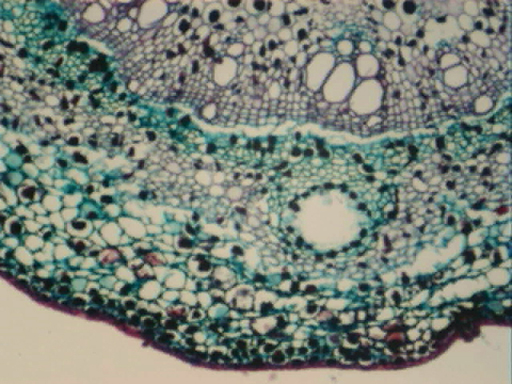A
review of the Motic DigiScope 300 LED field microscope with digital camera.
by David Walker, UK
Optics test details.
Close
down this window to return to article.
Or click
here for article if this page was found directly.
Table
1: Characteristics of the zoom lens at different settings.
Fields
of view rather than magnifications are quoted; magnifications for digital image
captures depend on both screen size
and screen resolution, which vary
widely amongst monitors and LCD displays.
|
Mag. set on barrel |
Optical
field of view |
Image capture field of view horizontal / mm |
Working distance / mm |
|
20x |
6.2 |
4.1 |
46 |
|
40x |
2.9 |
2 |
30 |
|
60x |
1.9 |
1.3 |
29 |
|
80x |
1.5 |
0.96 |
26 |
|
100x |
1.2 |
0.77 |
23 |
To
put these fields of view in perspective cf. a typical compound microscope,
the optical f.o.v for LOMO Biolam objectives with a monocular head and 10x eyepiece are:
objective 3.5x = 4 mm, 9x =
1.5 mm, 20x =0.67 mm, 40x =0.31 mm.
The Open University microscope f.o.v's
for the two objective model is 1.8 mm on low power and 0.77 mm on the high
power.
Digital image capture: The full maker's specifications for the DS-300 camera are on Motic's web site, and state it is a 1/3rd inch CMOS sensor. The following comments apply to the camera on the author's example, obtained new in Dec. 2004. This has apparently been superceded with one with an improved VGA sensor (Motic personal communication, see Conclusion in main article).
Captured images with the supplied DS-300 camera had good contrast and little noise but the VGA images had jagged edges on angled line detail. After some trials, setting the sharpening to zero from the default setting of 24 (in 0-63 range) reduced this to some extent. The cause may be a lack of anti-aliasing in the image processing software which is commonly used in consumer digicams to smooth out these so-called 'jaggies'. (See e.g. 'What are jaggies' on the 'Digicamhelp' website.) All images shown below had sharpness set to zero. Sharpening if desired is better carried out after resizing. The VGA images as with most low resolution sensors do benefit from downsampling to give a smoother result.
The test images from the improved camera that Motic kindly showed the author do not show jaggies on the VGA master so should be usable full size.
Table
A: Test images (0.2 mm gridded reticle). Click each
for as captured VGA master. Mags are the barrel settings.
Lighting is a little uneven at 20x but essentially even at higher mags. There's
little if any geometric distortion, good field flatness
and no marked aberration.
There's some coloring at 20x which may be a feature of a gridded test
subject rather than aberration. The 'jaggies' are not noticeable for subjects
with horizontal and vertical detail, as here.
Table B: A Motic 0.01 mm test slide (not supplied with the DigiScope) to show the 'jaggies' with angled edge detail. This artefact is possibly because of a lack of anti-aliasing. Motic have kindly shown the reviewer test images of the same test slide with the upgraded camera supplied with the latest DigiScope 300 and clearly show that this artefact is not seen with the new sensor.
|
|
|
Optimised image
from
Motic DigiScope 300.
Stained T/S cashew leaf section, Biosil
slide.
Transmitted light. Click image for master.

Above.
DigiScope 300, 90x setting. Zero sharpness.
Slight tonal balance adjustment
(but not colour balance). After resize the jaggy artefacts
are
only slightly visible on some cell walls.
|
|
Comments to the author David Walker are welcomed.
Acknowledgement: Motic personnel kindly commented on the reviewer's test images and emailed test images from the newer sensor and informed me of the improvements to the camera and software bundle in the latest DigiScope 300 outfit. However, at the time of writing (Jan. 2005) from queries sent by the author to both UK and US dealers, the author was unclear of how widely available the latest version is.
Published in the February 2005 edition of Micscape.
Please report any Web problems or offer general comments to the Micscape Editor .
Micscape is the on-line monthly magazine of the Microscopy UK web site at Microscopy-UK
© Onview.net Ltd, Microscopy-UK, and all contributors 1995
onwards. All rights reserved.
Main site is
at www.microscopy-uk.org.uk
with full mirror
at www.microscopy-uk.net
.